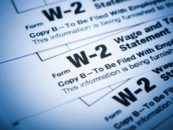(Eater)- Back in August, a prolific wine collector was given a distinction that no other connoisseur had ever been awarded in US history: he was sentenced to a 10 year prison term for counterfeiting wine. Rudy Kurniawan was ordered to a decade behind bars and to pay fines and restitution totaling over $48 million in connection with his wine dealings. A judge and jury had decided that while justice might be blind, it would not fail to recognize wine fakes and to punish the people who knowingly offered them for sale.
Kurniawan’s eventual fate was paved by the suspicions raised about another forger.
Last weekend, The New Yorker Festival convened a session on fake wine, and Kurniawan was the star exhibit. Each panelist was somehow connected to the Kurniawan trial: Billionaire collector William Koch, who testified against Kurniawan; fine wine consultants Maureen Downey, a government inspector, and Michael Egan, who also testified; and former federal prosecutor Jason Hernandez, who was the government’s lead attorney during the Kurniawan trial. What became clear as the members of the panel spoke, however, was that Kurniawan’s eventual fate was paved by the suspicions raised about another forger before he even became a suspect.
Kurniawan brought renewed attention to the issue of wine counterfeits recently, but it was Koch’s 2006 lawsuit against alleged wine forger Hardy Rodenstock that helped set in motion Kurniawan’s downfall. Koch, who had paid well over $300,000 for four bottles of wine reputedly associated with Thomas Jefferson, began to suspect that his bottles were forgeries after sources at the Thomas Jefferson Foundation told him that the bottles did not match their own detailed records of Jefferson’s purchases.
FRAUD ALERT: Kmart Fraud – CEO Calms Customers on Payment System Breach
In response, Koch funded private investigations of Rodenstock and also authentication efforts for his entire gigantic wine cellar, hiring an ex-FBI agent and an ex-head of the Sotheby’s wine department to do so. With their findings concerning the suspect Jefferson bottles in hand, Koch launched the 2006 lawsuit that ultimately would find Rodenstock, who lives in Germany, failing to appear for the legal proceedings in New York.
As William Koch was suing Rodenstock in New York in 2006, another wine dealer was being lionized on the other side of the country. A Los Angeles Times article from December of that year identified Kurniawan as the scion of a wealthy Chinese family, on a wine purchasing bender in America to the tune of $1 million a month. Kurniawan has since been proven to be an elaborate wine fraud whose scheme was apparently to raise market values at auction by bidding highly for wines, so as to reap higher returns when he sold bottles he had counterfeited back into the market.
Koch’s 2006 lawsuit against Rodenstock set the stage for Kurniawan’s eventual downfall because, as one Stanford Law School student writes, “prior to Koch’s action, reported case law dealing with counterfeit wine was scant or non-existent.” Koch’s examination of his own cellar, prompted by his suspicions about the Jefferson bottles, brought other bottles in his possession into question. Some of those bottles had come from Kurniawan, and Koch sued Kurniawan in 2009 over those wines, long before Kurniawan was arrested in 2012.
Many of the most striking quotes of The New Yorker Festival panel came from Koch and wine consultant Maureen Downey, who detailed stories of lavish tastings, half complete recipes for fakes, and counterfeiters with expensive taste toting bottles that looked just fine until examined closely.
FRAUD ALERT: Banks Harvest Callers’ Voiceprints to Fight Fraud
Koch estimated that he has paid millions of dollars for the fake wines in his possession, and he eventually launched seven separate lawsuits with counterfeit wine at the root of the complaints. Those lawsuits and investigations have cost Koch “something like $30 million or $40 million,” he said, admitting that he was “afraid to add it up.”
There’s “a huge code of silence in the wine trade.” — William Koch
Koch’s efforts were made more difficult, he said, by what he termed “a huge code of silence in the wine trade.” Owners of affected wineries have been hesitant to disclose that they are being targeted, and owners of fake wines are hesitant to devalue the worth of their own collections, said Koch. “I can’t tell you how many gifts I’ve gotten of fake wine,” he added, surmising that collectors unable to pass suspect bottles through auction houses or charity auctions simply give bottles away as gifts so as to be rid of them.
How does one know if they have bought a fake wine? The question was raised by the panel, and again much of the contemporary history seems to begin with Rodenstock. “It was Hardy Rodenstock who taught me how to authenticate wine,” said the consultant Downey, who went on to explain that it was Rodenstock’s questions to her about the bottle specifics of a wine for sale that got her to start considering the fine details of wine packaging and condition.
FRAUD ALERT: Mrs. Mary Buzarka is Scamming Folks Again With This Email Today
“Focusing on the wine that’s in the bottle is wrong, unless you have super taste; you have to focus on the bottle” stated Koch. Koch’s own lawsuit against Rodenstock had been partly based upon evidence that power drilling equipment, unavailable in Jefferson’s day, had been used to engrave the so-called Jefferson bottles with Jefferson’s initials.
“No one can taste for authenticity.” — Maureen Downey
The importance of bottle-based wine verification was underscored by Downey, who said that “no one can taste for authenticity.” She detailed several aspects of bottle packaging she examines to determine whether a wine is genuine or not, including label printing, glue, aging of the paper, the capsule, and the bottle itself.
“Does it all add up?” is the question she asks herself, and consider this the standard by which a wine can be judged genuine or fraudulent. But former Assistant United States Attorney Jason Hernandez, who prosecuted Rudy Kurniawan on behalf of the government and who has also prosecuted notable cases of art fraud, cautioned that “the art world is more sophisticated in the science of determining fakes than the wine world is.”
FRAUD ALERT: Visa Software Tackles Fraud at Gas Pump
“The business of selling rare old wine is basically over because of the preponderance of fakes,” declared Koch, who further stated that “the one rule is caveat emptor” (buyer beware). And Koch does not expect the rare old wine market to change, as “any time there is a huge difference in price you will always attract fakers.” But he has decided to stop suing people who may have sold him wine counterfeits. “I’m not going after anyone else because I think I got all of them. I got the main fakers,” he explained, alluding to his lawsuits against Rodenstock, Kurniawan, and others.
Koch also noted the “get out of jail free card” that many auction houses have added to their terms of sale since he began his series of litigation: The terms now often stipulate that the auction houses themselves cannot be held responsible for selling bottles later deemed to be fakes. Caveat emptor, indeed.
Now, we want to hear from you! Would like to share your opinion or make a comment on the Unlock Your Wealth Radio Show? If so, then please leave your comment or questions in the space provided below and share this article with your friends and family on Facebook and Twitter. Your comments or question could be chosen as our featured Money Question Monday and a phone call by financial expert Heather Wagenhals could dial your way to be live on the Unlock Your Wealth Radio Show.





